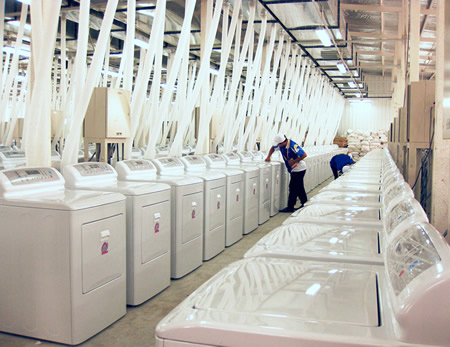In 1984, Zhang Ruimin was appointed the CEO of China’s household appliances manufacturer Haier. His mission: to turn the once inefficient brand into one capable to produce high-quality household appliances. Zhang went further. He built a reputation for Haier. And guided by his entrepreneurial vision he developed a unique and very innovative business model that launched Haier internationally, to become the first manufacturer of home appliances in the world. Zhang had it all figured it out, explains Bill Fischer Professor of Innovation Management at IMD business school in Lausanne, Switzerland “Zhang thought at some point China would be a market where quality would be appreciated. He believed (in such market) there would be brands whose one of their features would be quality as a differenciator.”
And so, Zhang began to make small and progressive changes to develop a brand capable of fulfilling the promise of quality, always with the guarantee of an excellent costumer service. “He succeeded and foreign brands started coming into China to compete against Haier,” says Fischer. The ideal scenario for China would be that many local brands could achieve Haier’s reputation and capacity for innovation. And thus they’d become Ambassadors of a new made in China, most sophisticated and exclusive.
China ended the year 2013 announcing the coveted title of being the first trading power in the world, surpassing the United States. Many put into question that China had actually registered a number of exports and imports big enough to reach the figure of 4.16 trillion dollar. But there has been a consensus on what it means for China the fact that it had registered an increase of 7.3% in the imports and a 7.9% in exports. Experts speak of an evident consolidation of domestic demand. Above all they highlight the fact that in the year 2013, 80% of the total number of products manufactured in China in order to be exported to foreign countries came from sophisticate sectors like High-tech. These are good news mainly because it would mean that the factory of the world could be finally getting away from its dying role as a mass manufacturer of clothes, shoes and other low quality products.
According to the official newspaper China Daily, significant changes in the labour market demonstrate the development of a new industrial structure. The need for a greater workforce in strategic sectors like transportation, electronics, computers and communications continued to grow to the point that in the year 2012, these industries had four million employees more than traditionally popular ones like textile. It’s a long way to go. And Chinese companies will struggle with the stigma of the made in China for a few more years until there’s some consolidation. Countries like South Korea and Japan went through this transition and are now considered key hubs of technological innovation.
According to the philosophy behind Zhang’s vision for Haier, the quality of products is strictly linked to management. And therefore, product innovation is a logical outcome of management innovation, explains Fischer. Haier has now five innovation and R&D centers in China, Japan, Australasia, Europa and the U.S.A. intended to develop a global working ecosystem.
Other Chinese companies are taking on similar strategies. Lenovo, for instance, is already the biggest PC manufacturer in the world after overcoming HP in Fall 2012. Determined to conquering the West Lenovo took a decisive step with the opening of its first Factory in the United States, in June last year. The plant based in the State of North Carolina has more than 110 workers, who assembly tablets and PCs destined to cover the demand from US costumers with the biggest efficiency.
The strategic purchase of IBM helped Lenovo earn a new market. But most importantly, it allowed the company to acquire much needed know-how to continue growing as a Chinese company seeking to earn the same respect than Western peers.






Danke für die Informationen über Haier!!!!